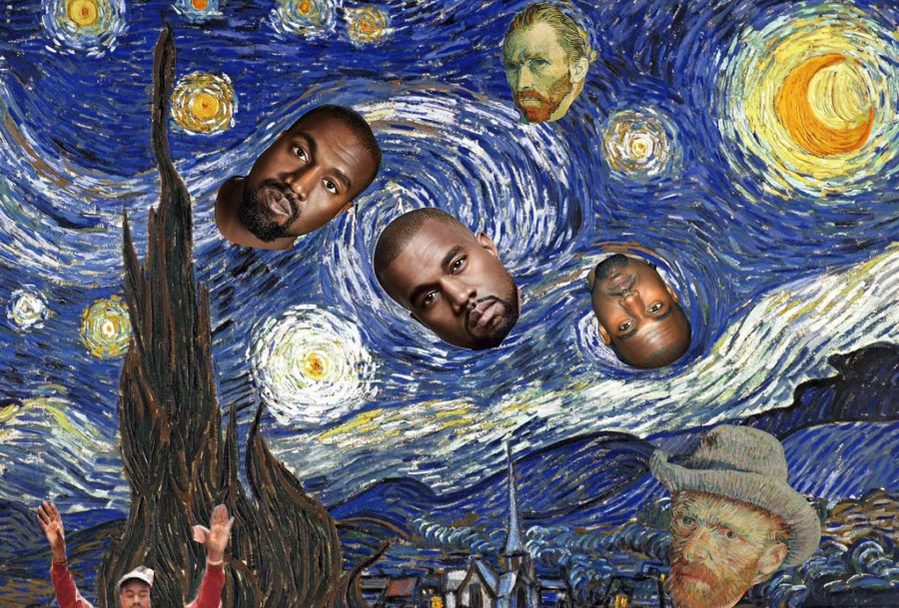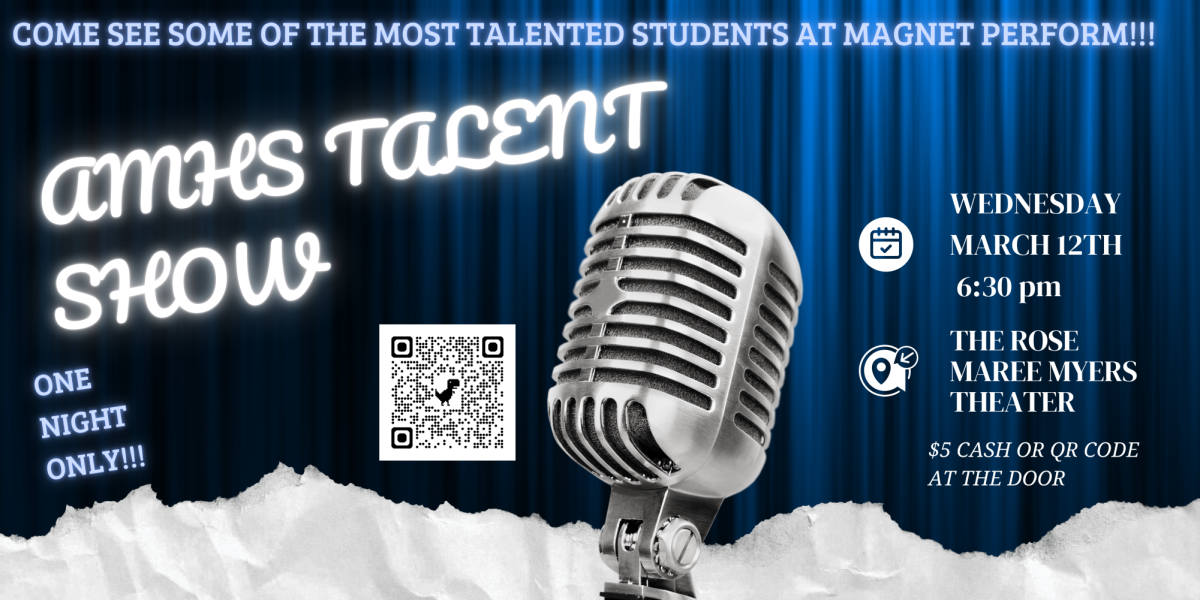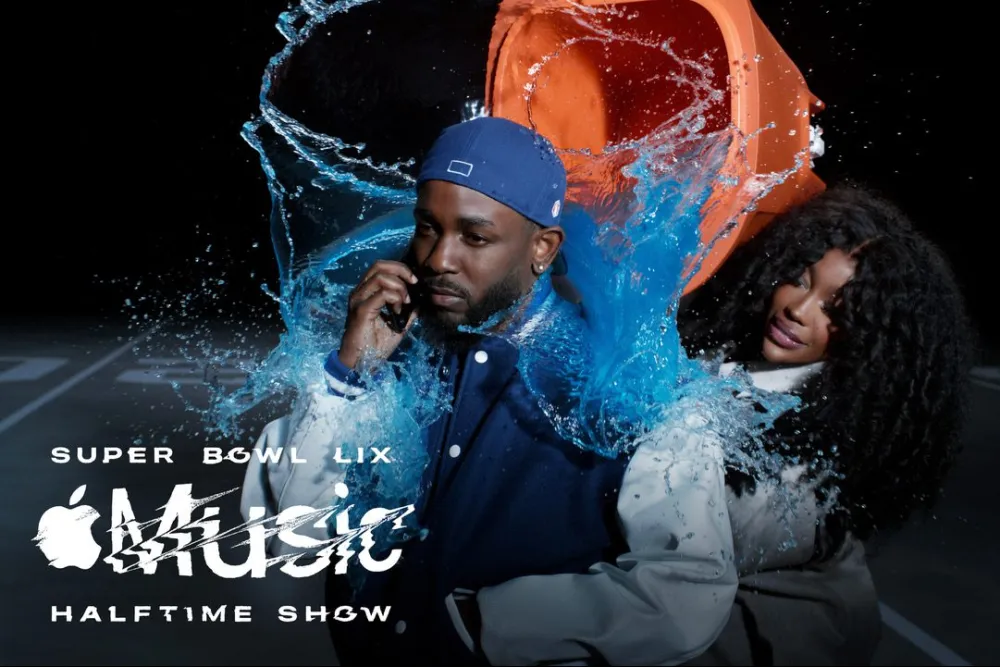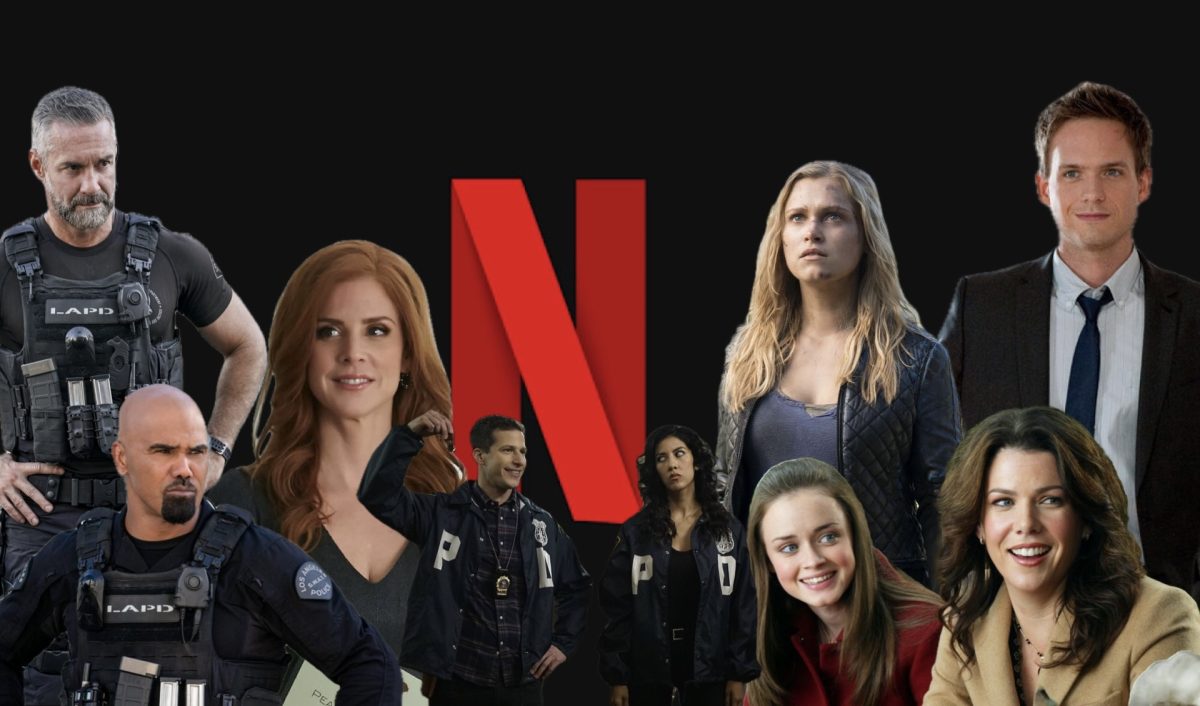Kanye West is one of the most controversial people on the planet. He’s never in the news for a good reason. From upstaging Taylor Swift at the VMAs to running for president to calling slavery a choice, Kanye’s actions and comments are always either inflammatory, misaligned with reality, or factually incorrect. Some of Kanye’s most recent and most dangerous comments are a number of statements that involve extreme anti-Semitic hate speech. Anti-Semitism is hostility or hate towards Jewish people, almost always towards members of the ethnicity as well as faith. Some of West’s statements can be found below, and it’s important to note that almost every statement made is incorrect (and usually incoherent).
Oftentimes, Kanye’s statements affirm conspiratorial beliefs regarding Jewish people. In an interview on Jared Kushner, husband of Ivanka Trump and former senior advisor to the president, Kanye said the Kushner family was only “about making money.” Statements like these explicitly feed into the decades, if not centuries, of anti-Semetic propaganda that propose that Jewish People are in control of financial institutions like the federal reserves. Some of West’s remarks are terrifying due to the scope of his fame. Whether his fans would like to admit it or not, statements like these have real influence over the general population and further feed the fires of the rising anti-Semitism in the U.S today. The statement on the Kushner family, though, is relatively tame when compared to statements that attempt to incite violence against Jewish people. Kanye West once announced that he was going to go “death con 3 on JEWISH PEOPLE” in a Tweet where he also claimed that he could not be anti-Semitic because “black people are actually Jew also”. Needless to say, Kanye’s mental illnesses don’t excuse the explicit hate speech that he freely posted on his public platform.
In order to justify their listening habits, many of Kanye’s fans cite the practice of “separating the art from the artist”. What does this even mean? In order to explain the importance of acknowledging the context of the art we consume, it’s necessary to understand a specific case study.
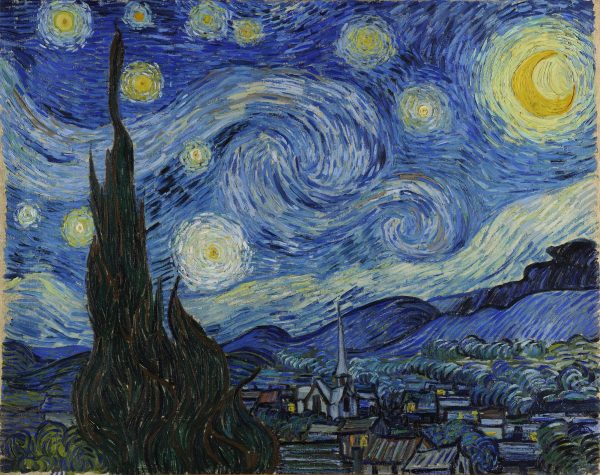 Vincent Van Gogh was a Dutch painter born in the Netherlands during the mid-1850s. He’s known as a post-impressionist, a style defined by vivid use of color and geometric shapes. Van Gogh’s style is best exemplified in his most famous painting: The Starry Night. The painting features lots of spirals and circles and the vivid colors of the evening sky. The brilliant colors are contrasted with the grays and browns of the town below. Van Gogh’s later work was deceptively optimistic. However, many of his most famous works were painted at an insane asylum in France that Van Gogh was committed to for the last years of his life after the infamous incident of him cutting off his earlobe. His work at Saint-Rèmy was often colorful, inspired by nature, and captured from the view outside his room’s window.
Vincent Van Gogh was a Dutch painter born in the Netherlands during the mid-1850s. He’s known as a post-impressionist, a style defined by vivid use of color and geometric shapes. Van Gogh’s style is best exemplified in his most famous painting: The Starry Night. The painting features lots of spirals and circles and the vivid colors of the evening sky. The brilliant colors are contrasted with the grays and browns of the town below. Van Gogh’s later work was deceptively optimistic. However, many of his most famous works were painted at an insane asylum in France that Van Gogh was committed to for the last years of his life after the infamous incident of him cutting off his earlobe. His work at Saint-Rèmy was often colorful, inspired by nature, and captured from the view outside his room’s window.
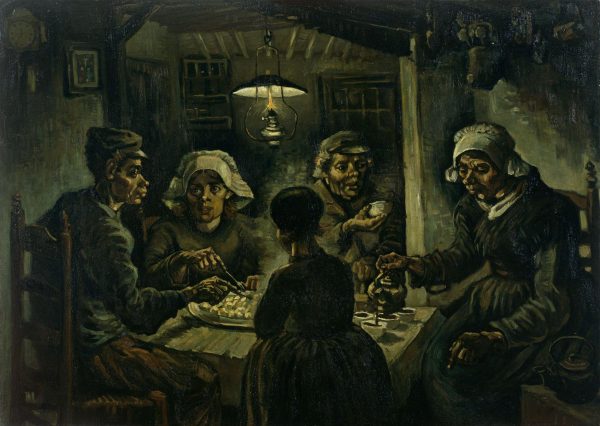
The painter that Van Gogh was in the later years of his life is completely different than the man from the early 1880s. 1885’s The Potato Eaters is a great example of this contrast. The dark interior scene of a family dinner isn’t found very often in Van Gogh’s later work. There’s some heavy irony here; Van Gogh’s mental health deteriorated as his life went on. His art became more colorful and full of life once his bipolar disorder, the diagnosis he is now thought to have had then, took hold of him completely. The beauty of Van Gogh’s later work becomes very tragic when you know the things that were happening in his life.
It’s a sad correlation. The more tragic the circumstances around his paintings, the more famous they are. Self Portrait with a Bandaged Ear (1889) was painted mere months before he was committed to the asylum in Saint-Rèmy, and is one of his most recognizable works. The meaning and beauty of his works is derived from its tragic creation.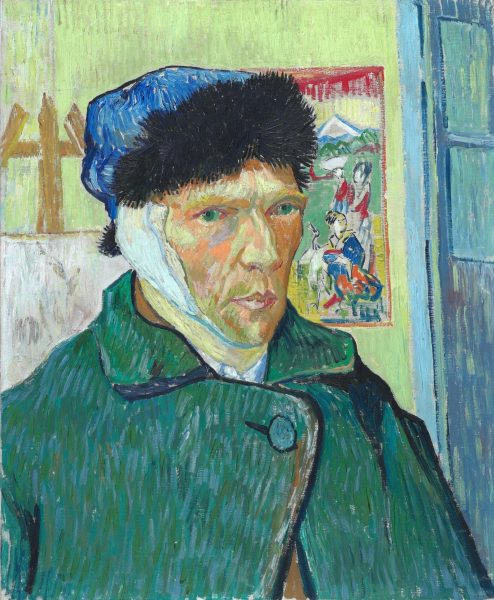
The transcendent beauty of paintings like The Starry Night can’t be appreciated with a quick glance from a museum goer. They might notice the pretty colors of the sky and the nice pleasing patterns, but they won’t know what the painting means. They won’t know that The Starry Night represents how Van Gogh saw the beauty of the world months before he committed suicide. By separating Van Gogh’s life from his work, the meaning of his masterpieces become confined by their own beauty.
Kanye West’s music deals with similar themes to Van Gogh’s paintings. West also has manic depression, or bipolar disorder, and similarly expresses his struggles with his mental health in his work. The text on the cover of his 2017 album ye reads “I hate being bi-polar it’s awesome”. Songs like “Ghost Town” make mention of substance abuse, “I Thought About Killing You” references West’s suicidal thoughts, and “Reborn” discusses life off of his medications. Again, the themes of these songs are derived from the life of the artist. When life is such an important part of art, how can a consumer of said art ignore the life that produced it?
It’s irresponsible to separate the art someone creates from themselves. But, the question is always “how can I listen to the music I like without feeling bad about it?” If you truly “separate the art from the artist” then the art loses its significance. The reality of the situation is that if you listen to the music while trying to ignore the fact that Kanye wrote it, then why are you listening to it at all? Doesn’t it seem disrespectful to the artist that you wish to listen to their music or look at their paintings without any thought of how they made it? It’s as simple as this: there’s nothing inherently wrong about listening to Kanye’s music. What’s wrong is either knowing and ignoring the fact that the man singing the song has said he wants to kill Jewish people. It may not seem like there’s an equivalency between the statements that an artist might make in and outside of their work. However, the only difference is the medium in which the artist is working. Sending a Tweet is just as significant a statement as a song lyric when a celebrity has as much influence as Kanye does. Their actions are all encompassing because of the size of their platform. By listening to his music you’re supporting someone who has made these statements, whether he’s economically benefiting or not. To sacrifice context is to sacrifice meaning, and to continue to consume is to continue to support. There’s not an easy way out or a simple solution. Should you separate the art from the artist? Can you separate the art from the artist?
Sources
https://people.com/politics/kanye-turns-on-jared-kushner-fox-news-interview/
https://www.adl.org/resources/backgrounder/jewish-control-federal-reserve-classic-antisemitic-myth
https://www.britannica.com/biography/Vincent-van-Gogh
“ye” Kanye West, 2017
http://www.vggallery.com/index.html



